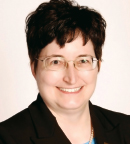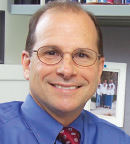
Just because the guidelines for screening tell you to stop around age 75, or when the patient’s life expectancy is less than 5 to 10 years, that doesn’t mean you shouldn’t follow your breast cancer patients with follow-up mammograms.— Martine Extermann, MD, PhD
Tweet this quote
Integrated care, a focus on prevention and screening, and acknowledgment of comorbidities on the impact of treatment all play a critical role in the cancer survivorship of older patients, according to Martine Extermann, MD, PhD, a medical oncologist at Moffitt Cancer Center in Tampa, Florida.
According to the SEER (Surveillance, Epidemiology, and End Results) registry, the median age of most cancers is in the late 60s or early 70s, and the general median age of all cancers is 67. “A lot of cancers in younger adults do actually have more than 5-year survival, so that’s very good and encouraging news,” added Dr. Extermann at the 2016 Multinational Association of Supportive Care in Cancer/International Society of Oral Oncology (MASCC/ISOO) International Symposium on Supportive Care in Cancer in Adelaide, Australia.1 “But where we really need to improve survival is in cancers in the elderly, since 60% of cancer survivors are 65 and older, and a large majority of this population has not been addressed in survivorship studies.”
Follow-up and Surveillance
“The first thing you do when you have a cancer survivor is keep following the original cancer,” said Dr. Extermann, whose main interest at Moffitt Cancer Center is understanding how the health of older patients interacts with the choice of cancer treatment.
In a 2007 study, breast cancer patients with follow-up mammograms had a decreased risk of subsequent death from their breast cancer, even after the age of 80.2 “Just because the guidelines for screening tell you to stop around age 75, or when the patient’s life expectancy is less than 5 to 10 years, that doesn’t mean you shouldn’t follow your breast cancer patients with follow-up mammograms,” she emphasized.
She also stressed the importance of surveillance for second cancers in elderly patients. “Twenty-percent of the patients I see in my clinic are actually coming for their second cancer, no matter their age,” revealed Dr. Extermann. “So if you have a patient with a history of breast cancer and she presents with a lung nodule, never assume it’s the breast cancer until you’ve put a needle in that place.”

Surveillance for second cancers and late effects is critical, since one in five incident cancers in the United States is a second cancer.— Kevin Oeffinger, MD
Tweet this quote
Kevin Oeffinger, MD, a primary care physician at Memorial Sloan Kettering Cancer Center in New York, further commented on the importance of risk-based health care of cancer survivors.3 “Surveillance for second cancers and late effects is critical, since one in five incident cancers in the United States is a second cancer,” he declared.
Frequent Comorbidities
Dr. Extermann cautioned that cancer is only one disease among others in older patients, and these other diseases can also limit survival. It is important to recognize these frequent comorbidities in discussions of adjuvant cancer treatment, she said.
She cited a randomized trial that retrospectively analyzed the prognosis of diabetic patients receiving adjuvant chemotherapy for colon cancer vs those without diabetes receiving the same treatment.4 In the trial, the diabetic patients relapsed 20% more frequently than did the nondiabetic patients, with the exact same treatment.
Furthermore, a well-known study that compared adjuvant chemotherapy vs no adjuvant chemotherapy for stage III colon cancer showed the same effect size.5 “So whether a patient has diabetes or not is going to be as influential on the prognosis of colon cancer as whether you give adjuvant chemotherapy or not,” explained Dr. Extermann.
“The plot thickens further,” she added, underlining the influence of different diabetes medications on cancer. According to the literature, a diabetic patient with breast cancer who receives metformin will have a response rate that is actually higher than that of a person who does not have diabetes, whereas a diabetic patient with breast cancer who is not on metformin will have a lower response rate.6 Currently, a large adjuvant trial is evaluating the addition of metformin to the adjuvant treatment of breast cancer, she noted.
Diabetic complications also raise the risk for chemotherapy-induced neuropathy, particularly with taxanes and more so with paclitaxel than docetaxel.7 “So if you have a diabetic patient and you have a choice in treatment plan, try to avoid giving them a taxane,” advised Dr. Extermann.
“But you always have to avoid tunnel vision,” she warned. For example, osteoporosis in breast cancer is often unrelated to cancer treatment.8 “Not every problem cancer survivors have is a complication of cancer or cancer treatment; you have to remember they have a life beyond cancer,” she said.
Does Cancer Treatment
Age Patients?
Aging can be defined as a decrease in functional reserve, and an acute event, such as cancer surgery, taxes that reserve. Dr. Extermann stressed the importance of identifying signs of physiologic or biologic aging to guide the identification of treatments after such acute events.
Among the many proteins and markers associated with aging is the tumor-suppressor protein p16, which has been found to be increased in older persons and further increased by chemotherapy. In a study that measured p16 levels before and after chemotherapy, there was a median increase of 1.9-fold between baseline and the end of treatment.9 “This is the equivalent of about 15 years of age,” said Dr. Extermann. “That’s an interesting finding.”
“I think the jury is still out on how much we age patients with our treatments,” admitted Dr. Extermann, noting that biologic markers such as p16 seem to suggest about 10 years, whereas no difference has been observed in cytokines and functional markers as a result of chemotherapy. “But it’s a very important question when we treat these older cancer patients, and we have to decide the benefit of adjuvant treatment vs the potential side effects,” she stated.
“This is an era of large collaborations,” added Dr. Oeffinger, since no studies to date have ample power to investigate the interaction of treatment, genetic factors, lifestyle behaviors, treatment exposures, aging, and comorbid conditions. Older survivors can have long survival and die from their cancer or something else, according to Dr. Extermann, but integrated care is crucial since the care of one disease can influence the care of others. ■
Disclosure: Dr. Extermann reported no potential conflicts of interest.
References
1. Extermann M: 2016 MASCC/ISOO International Symposium. Session PLE03. Presented June 25, 2016.
2. Oeffinger K: 2016 MASCC/ISOO International Symposium. Session PLE03. Presented June 25, 2016.
3. Lash TL, et al: J Clin Oncol 25:3001-3006, 2007.
4. Meyerhardt JA, et al: J Clin Oncol 21:433-440, 2003.
5. Moertel CG, et al: Ann Intern Med 122:321-326, 1995.
6. Jiralerspong S, et al: J Clin Oncol 27:3297-3302, 2009.
7. Hershman DL, et al: J Clin Oncol. June 20, 2016 (early release online).
8. Camacho PM, et al: J Clin Oncol 26:5380-5385, 2008.
9. Sanoff HK, et al: J Natl Cancer Inst 106(4):dju057, 2014.

